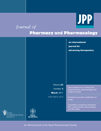Advancing in-vitro drug precipitation testing: new process monitoring tools and a kinetic nucleation and growth model
Abstract
Objectives Poorly soluble weak bases often precipitate during intestinal passage, potentially leading to incomplete drug absorption. The underlying in-vivo and in-vitro drug precipitation mechanisms are not well understood. Thus, new analytical tools and a kinetic nucleation and growth model were introduced to in-vitro drug precipitation testing in biorelevant media.
Methods A drug precipitation test was used to simulate the transfer from the stomach to the intestine. Changes in the acceptor vessel were monitored using online dynamic image analysis and inline Raman spectroscopy. The concentration profiles of the model drug dipyridamole were analysed by high-performance liquid chromatography and the resulting data were fitted with a set of differential equations.
Key findings The dynamic image analysis revealed a complex structure of the precipitated dipyridamole particles, which were described as star-like crystals or aggregates of elongated primary particles. Raman spectroscopy allowed the precipitation over time to be monitored. Using the kinetic nucleation and growth model to describe this process demonstrated perfect agreement with the experimental data.
Conclusions The analytical methods and the kinetic model provided new insights into biorelevant drug precipitation and could in the future support formulation development.




